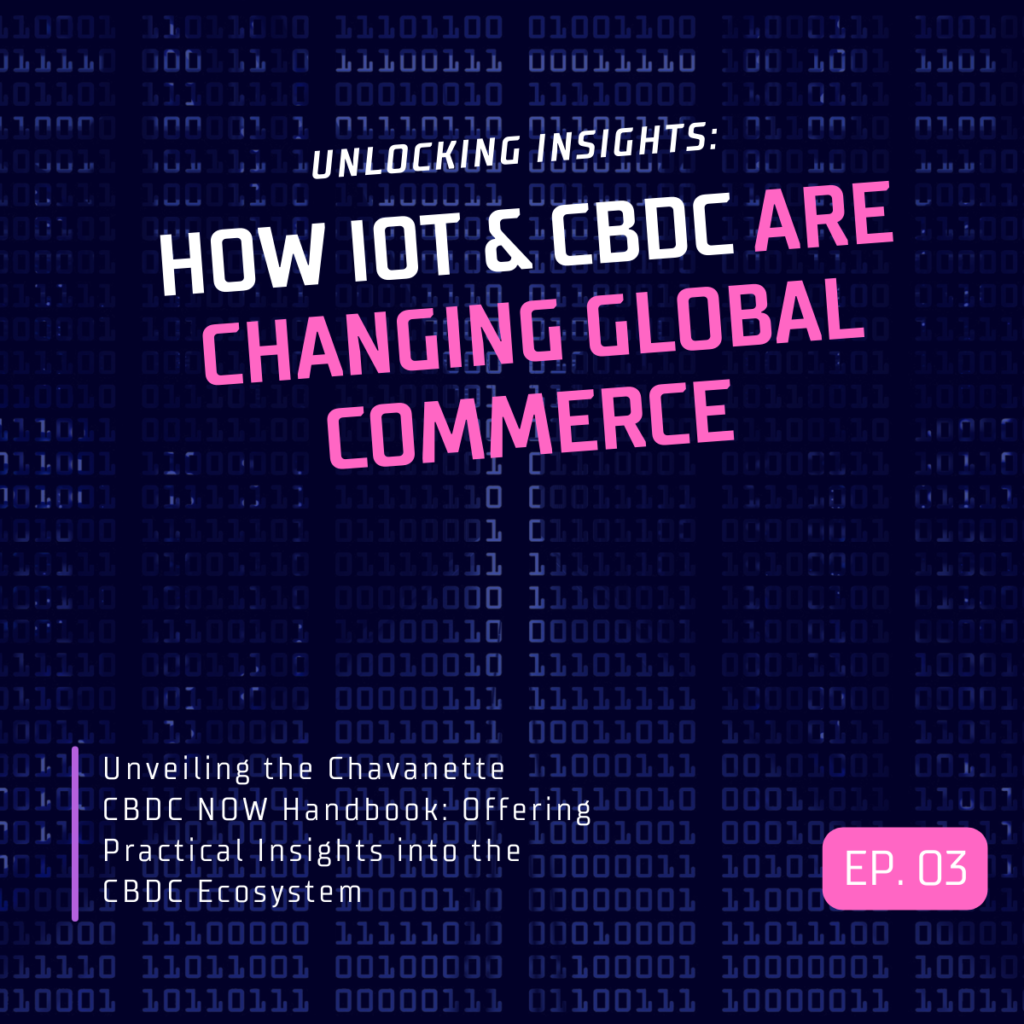In the area of global trade, efficiency and precision are non-negotiable. IoT (Internet of Things) devices, equipped with a plethora of sensors, are redefining the landscape of trade processes, allowing for the monitoring of both location and condition of goods in real-time. These devices, when integrated with Central Bank Digital Currencies (#CBDC), create a seamless and automated transaction flow, with real-time data enabling the sensors to trigger payments at different stages in the value chain.
This integration with CBDCs ensures that the transaction is not only prompt but also secure and transparent, with risk management made more effective through the analysis of data patterns. Moreover, these automated processes significantly reduce human intervention, thereby minimizing the likelihood of errors. This proactive approach ensures smoother trade operations, fostering trust and reliability among trade partners.
The integration of CBDCs and IoT presents a powerful synergy that holds immense potential to revolutionize various aspects of the digital economy. By leveraging the unique advantages of both technologies, businesses and consumers can unlock a world of new opportunities and address existing challenges in the realm of micropayments and beyond.
1. Automated Trade Processes with IoT and CBDC Integration
The concept of “retail escrow” or consumer prepayment is currently being explored in the CBDC space, which will be enhanced by incorporating the potential of the Internet of Things (IoT). Unlike conventional settlement methods, CBDC-enabled prepayment doesn’t involve the immediate transfer of the prepayment as a lump sum to the merchants upon a consumer’s purchase of a good. Instead, the corresponding amount is released to the merchant only after the consumers have received the desired products, facilitated by IoT devices and smart contracts.
This integration of IoT adds an extra layer of efficiency and security to the “retail escrow” process. Through interconnected IoT devices, merchants can receive real-time updates and verification of the delivery or fulfillment of goods and services. This ensures that the funds are transferred only when the agreed-upon conditions, detected by IoT sensors or devices, are met. The IoT-enabled smart contract approach provides merchants with increased assurance regarding the availability of funds and reduces the risk of non-payment.
From the customer’s standpoint, IoT enhances the transparency and reliability of prepayments. IoT devices can track the delivery of goods or the utilization of services, triggering the transfer of funds only after the customers have received the desired products or experienced the service. This empowers customers with confidence, knowing that their funds are secure until they have successfully received the intended benefits.
Imagine a scenario where goods, fitted with IoT sensors, are traversing global supply routes. These sensors continuously relay data on the goods’ condition and location. Once these goods reach their destination, the sensors can autonomously initiate the payment process through smart contracts. This transaction is not just timely, but fortified with layers of security, transparency, and trust, inherent in CBDCs.
2. Enhancing Supply Chain Transparency and Efficiency
IoT’s real-time tracking capabilities go beyond mere location tracking; they provide a holistic view of the goods’ journey. This includes monitoring environmental conditions like temperature and humidity, crucial for preserving the integrity of perishable items. When this level of detail is integrated with CBDC-driven transactions, it elevates the supply chain’s reliability and trustworthiness. Payments can be automatically released upon meeting specific conditions, ensuring compliance and quality assurance.
3. Specific Use Cases of CBDC and IoT in Trade
Let’s delve into specific use cases to better understand the practical implications of CBDC and IoT integration in trade.
For instance, in the pharmaceutical industry, maintaining the integrity of medicines during transportation is critical. IoT sensors can monitor temperatures in real-time, ensuring that drugs are stored in optimal conditions. Upon arrival, and only if these conditions have been maintained throughout, a CBDC transaction is automatically triggered, ensuring payment for compliant delivery.
In agriculture, IoT can monitor the quality and quantity of produce in transit. Sensors can detect if produce like fruits and vegetables are kept at the right humidity levels. Once these products reach their destination in the desired state, the payment through CBDCs is automatically released, ensuring that farmers and suppliers are promptly and fairly compensated.
4. Regulatory Framework and Standardization
The effective deployment of CBDC and IoT in trade will require a robust regulatory framework. This includes international standards for IoT device interoperability and security, along with regulations governing CBDC transactions across borders. Establishing such standards will not only foster trust among trade partners but also ensure a level playing field in the global market.
5. The Future of Trade: Intelligent and Interconnected
The integration of CBDC and IoT is poised to reshape global trade, ushering in a new era of intelligent and interconnected transactions. Advancements in AI and machine learning will empower IoT devices with greater sophistication, enabling them to make complex decisions and provide deeper insights. This evolution promises streamlined trade processes, reduced costs, and accelerated transaction speeds.
Beyond efficiency gains, the integration of CBDC and IoT holds the potential to foster more equitable global trade practices. By offering real-time data and transparent transactions, it can bridge the divide between developed and developing nations, providing smaller players with a fairer chance to participate in the global market.
However, the journey towards full integration is not without challenges. Cybersecurity risks, data privacy concerns, and the need for infrastructural overhaul loom large. Yet, the opportunities presented by this integration are vast. To seize them, collaborative efforts between governments, technology providers, and trade organizations are paramount. By working together, they can create a secure and efficient ecosystem that fully harnesses the potential of CBDC and IoT technologies in trade.
Final Thoughts
The synergy between CBDC and IoT marks a transformative chapter in the story of global trade. By embracing these technologies, we can look forward to an era marked by enhanced efficiency, transparency, and equity in trade practices. As we venture into this new horizon, it is essential to navigate the challenges with strategic planning and international cooperation, ensuring a seamless and prosperous future for global trade. IoT in automated trade processes isn’t just a technological upgrade; it’s a paradigm shift. It promises more efficient, transparent, and reliable trade practices, paving the way for a more interconnected and intelligent global trade ecosystem. This integration of technology in trade not only streamlines processes but also builds a foundation of trust and sustainability for future trading practices.





